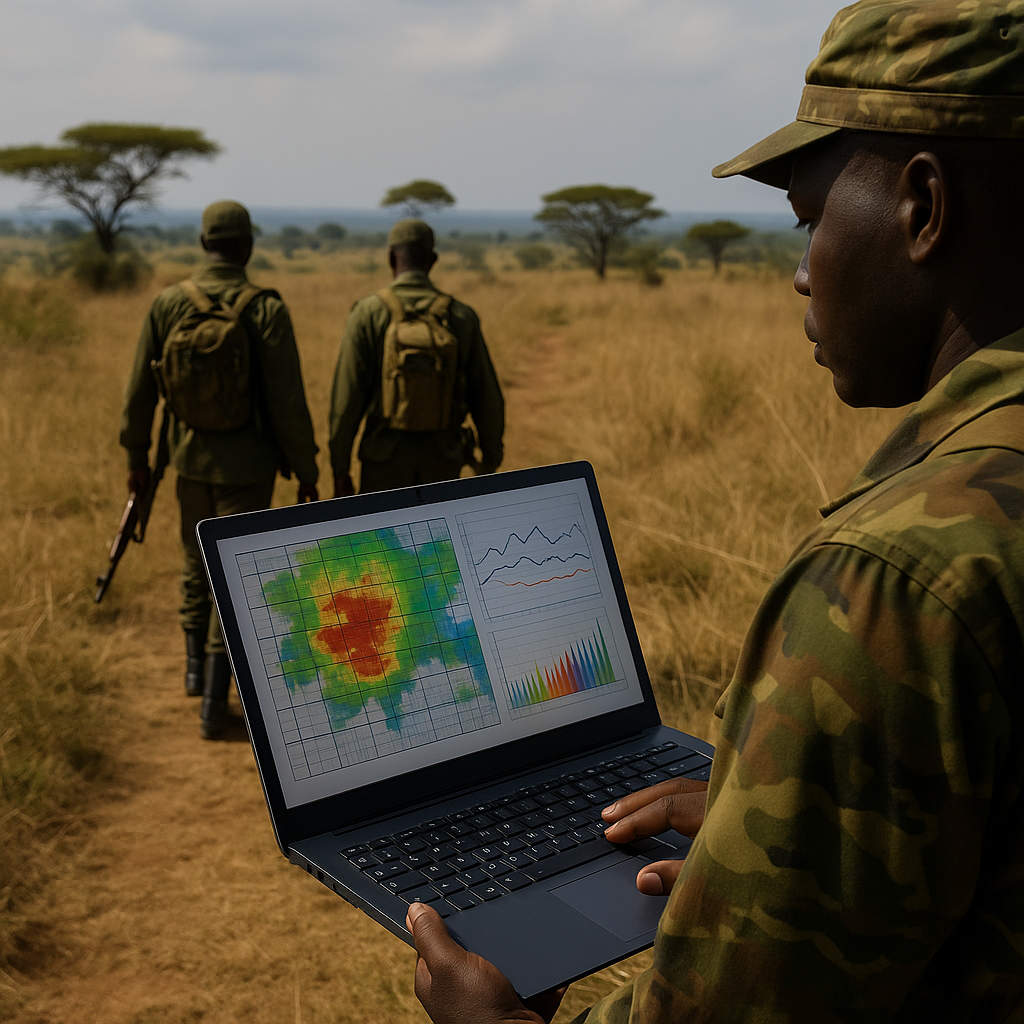Generative AI delivers data-driven strategies for smarter wildlife protection
Beyond its operational advantages, the study demonstrates the potential of generative AI to address real-world challenges in conservation technology. Unlike diffusion models that require vast amounts of data and often struggle with instability in small datasets, the flow-matching approach used in WILDFLOW is better suited to the realities of conservation environments, where data can be sparse, noisy, and frequently updated.

Anti-poaching teams in African national parks face a persistent challenge: detection data is incomplete. When rangers patrol an area and find no snares or signs of illegal activity, it does not necessarily mean poaching did not occur; it often reflects the inherent difficulty in spotting well-hidden traps or signs of human intrusion. Compounding the issue is the scarcity of comprehensive, high-quality data, making it difficult to train robust AI models.
To address this, a team of researchers has developed an innovative artificial intelligence (AI) framework aimed at transforming anti-poaching efforts in Africa. Their groundbreaking work, detailed in the study “Generative AI Against Poaching: Latent Composite Flow Matching for Wildlife Conservation,” submitted on arXiv, leverages the power of generative AI to forecast poaching risks more accurately and help optimize ranger patrols in national parks.
Tackling imperfect detection and sparse data
The WILDFLOW framework, introduced in this study, addresses both of these pain points. By treating poaching as a latent, or unobserved, variable and modeling detection as a separate process, WILDFLOW captures a more accurate representation of real-world poaching dynamics. The framework builds on conditional flow matching, a generative AI approach that allows the system to start from a simple linear occupancy model, enriched with Gaussian noise to reflect variability. This warm-start approach makes the framework more data-efficient, a critical advantage in conservation scenarios where data is scarce and conditions change rapidly.
By integrating spatial modeling, WILDFLOW captures how poaching risk is interconnected across the landscape. Poachers often adapt to patrol routes, shifting their activities to neighboring zones to evade detection. Using graph neural networks, the framework represents the park as a grid of one-square-kilometer cells and learns spatial relationships that mirror these displacement patterns.
Significant gains in predictive accuracy
The study revolves around two of Uganda’s largest national parks, Murchison Falls National Park (MFNP) and Queen Elizabeth National Park (QENP), to test the performance of WILDFLOW. Historical patrol data, combined with environmental information such as vegetation cover, elevation, weather patterns, and patrol intensity, formed the backbone of the training datasets.
Results from extensive testing over multiple years demonstrated the consistent superiority of WILDFLOW over traditional models like logistic regression, Gaussian processes, and even state-of-the-art machine learning methods such as multi-layer perceptrons, graph neural networks, and transformers. In Murchison Falls, the framework achieved an average improvement of approximately 7 percent in area under the precision-recall curve (AUPR) compared to the strongest baseline. In Queen Elizabeth, the improvement was even greater, at around 10 percent.
An ablation analysis underscored the importance of WILDFLOW’s two core innovations. Removing the detection modeling component reduced the system’s ability to distinguish between true absences of poaching and missed detections, while eliminating the composite warm-start significantly degraded predictive performance. These findings highlight that the combination of explicit detection modeling and generative AI-driven flow matching is essential for achieving reliable results in data-limited settings.
The gains were particularly noticeable in two types of scenarios. First, in areas with high neighboring patrol effort, where spatial displacement effects are strongest, WILDFLOW’s ability to model spatial correlations yielded more accurate forecasts. Second, in areas closer to patrol posts, where the probability of detecting poaching is higher, the framework leveraged these reliable observations to refine its risk estimates.
Implications for Conservation and Policy
Accurate prediction of poaching risk has direct, life-saving implications for wildlife conservation. Elephants, pangolins, and large predators such as lions are often prime targets for poachers, and limited ranger resources mean that misallocated patrols can lead to devastating population losses. By generating reliable, data-driven risk maps, WILDFLOW empowers conservation managers to deploy patrols strategically, targeting high-risk areas with greater precision and efficiency.
Beyond its operational advantages, the study demonstrates the potential of generative AI to address real-world challenges in conservation technology. Unlike diffusion models that require vast amounts of data and often struggle with instability in small datasets, the flow-matching approach used in WILDFLOW is better suited to the realities of conservation environments, where data can be sparse, noisy, and frequently updated.
The authors emphasize that their work is not just a technical contribution but also a step toward integrating AI into sustainable and ethical conservation practices. They propose a carefully phased rollout of WILDFLOW, starting with controlled pilot programs in Murchison Falls and Cross River National Park before broader integration with the widely used SMART conservation platform. This cautious approach is designed to ensure operational reliability while allowing for continuous auditing and adjustments based on feedback from rangers and conservation managers.
Future directions and limitations
While WILDFLOW represents a significant leap forward, the study acknowledges important limitations. The framework can only be evaluated against observed detections, as true poaching events that go entirely undetected remain unknowable. Additionally, the dynamic and non-stationary nature of poaching behavior means that the model requires frequent retraining to maintain accuracy.
The authors recommend expanding the scope of future studies to include more diverse ecosystems and cross-border conservation areas, where poaching networks often operate across national boundaries. They also highlight the need for operational testing under real patrol conditions to validate the framework’s effectiveness and explore integration with mobile and low-computation platforms for real-time decision support.
Despite these challenges, the potential of WILDFLOW to transform anti-poaching strategies is undeniable. By combining advanced generative AI techniques with a nuanced understanding of conservation realities, the framework offers a scalable and data-efficient tool that could reshape how wildlife reserves worldwide combat poaching.
- FIRST PUBLISHED IN:
- Devdiscourse










